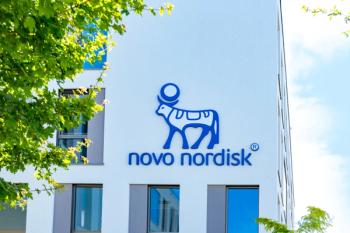
M&A: Range of Fundamental Factors Will Drive Strong Deal Flow
The outlook for pharma M&A continues to be strong, writes Michael Jewell.
Last year proved to be a bumper year for pharmaceutical mergers and acquisitions (M&A) with over $265bn worth of deals globally in life sciences alone, an increase of 26% on 2017. This was against a backdrop of strong global M&A with the total value of deals amounting to $3.8 trillion in the year. Mega-deals dominated as the largest pharmaceutical firms looked to increase their pipeline of innovative drugs particularly within biopharma. Companies focused on oncology and gene therapy were among the most attractive targets.
The outlook for M&A continues to be strong, with a key driver being the growing cost and difficulty of R&D. Another likely driver is the encroachment of technology giants into Big Pharma’s territory, with both Apple and Google making rapid strides in the broad healthcare and pharma arenas. Another factor is the emergence of rivals from developing economies. The pharmaceutical industry remains dominated by US and European companies, but the entry of Japanese drugs firm Takeda into the global top ten and with other pharma companies from more emerging economies waiting in the wings, it’s likely that further consolidation and M&A will grip the sector in the next few years.
Acceleration of mega mergers
Last year saw a series of mega-deals with Japanese firm Takeda’s £64bn purchase of Ireland based rare diseases specialist Shire the biggest of them all. The deal catapulted Takeda into the global top 10 pharmaceutical firms by revenue and made it the second Asian firm, alongside Sinopharm group, to enter a global top 10 previously dominated by US and European firms.
GlaxoSmithKline’s (GSK’s) buyout of Novartis’s stake in their consumer health joint venture for $13bn was another mega deal which saw GSK merge its consumer business with Pfizer, as part of GSK’s plan to split into two separate businesses in two years’ time. GSK also acquired Tesaro for $5bn to strengthen its oncology capabilities. Meanwhile, French firm Sanofi completed the acquisitions of Bioverative, a hemophilia and rare blood disorder specialist for $11.6bn and Belgium’s Ablynx for $4.85bn. [1]
This year has also seen brisk M&A activity with Bristol-Myers Squibbs $74bn purchase of Celgene, in an expansion of its oncology capacity that should enable it to develop and expand its cancer and immunotherapy capabilities. BMS will gain the rights to Celgene’s cancer therapy Revlimid, to add to its CAR-T portfolio, which it acquired last year through its $9bn takeover of Juno Therapeutics.[2]
Eli Lily also recently completed an $8bn acquisition of Loxo Oncology, broadening the scope of its portfolio of precision medicines for patients with genomically defined cancers. [3] Other major pharma companies have announced strong M&A intentions for the upcoming year, thanks, in part, to strong balance sheets. Although another key driver, according to Merck CEO Ken Frazier, is that biotech valuations are particularly attractive.
Gilead Chief Financial Officer Robin Washington has stated that: “First and foremost, we’re focused on M&A”.[4] Pfizer CEO Albert Bourla has also said the company is in the market for mid and late stage assets, citing the health of Pfizer’s balance sheet as a facilitator for growth.
Drive to innovate fuels M&A
One of the reasons behind the strong M&A activity in 2018 is likely to have been the emergence of several new classes of drug. But it was also driven by a lack of R&D by the larger pharmaceutical firms with an increasing share of their revenues coming the acquisition of smaller innovative companies.
Forecasts suggest the total value of revenues at risk from patent expiration over the next three years for the top-25 pharmaceutical companies is approximately $85bn.[5] But while the development of new innovative drugs is necessary to replace those patents that will be lost, R&D is expensive and results can be mixed. M&A allows firms to purchase innovative drugs that show clear potential while they are in development. M&A also allows firms to strategically re-align their drug portfolios, reinforce their commercial pipelines or sell assets acquired in past deals for which they are no longer the best owner.
In 2016 around half of revenues at the largest pharmaceutical firms’ were derived from novel products compared with just under 60% five years ago. [6] A fall of nearly 10% over five years may not suggest R&D at the largest drugs companies is in terminal decline but it indicates they are increasingly relying on M&A and buying in innovation rather than investing in their own research.
Big Tech: competition or cooperation
One of the key questions in the future will be how the relationship between the technology and pharmaceutical and healthcare giants will develop and whether or not they will become direct competitors. The emergence of big tech firms, most notably, Apple and Google, into the healthcare industry presents the pharmaceutical industry with both an opportunity and a challenge. Apple has already invested heavily in digital health, introducing ResearchKit in 2015 and CareKit in 2016, both open source platforms designed to allow developers to build apps for research and consumer health.
Google has founded Verily Life Sciences to translate data science and manipulate big data into health technologies. Amazon is also widely expected to be planning a move into pharmaceuticals retailing. There is no question that technology companies are going to play a role in the healthcare sector in the future but whether they will act in direct competition with the pharmaceutical industry remains unclear. Former Teva chairman Titzhak Peterbug stated “a good part of our competitors are not only the Novartis’s of the world and the other pharmas but really the Amazons and the Googles.”[7] But there has also been cooperation between technology and pharmaceutical companies with Verily Sciences partnering with GSK to found Galvani Bioelectronics to research, develop and market new bioelectric medicines. Where technology and pharmaceuticals do collaborate the potential benefits could be enormous.
Wearable tech in particular will make it easier to collect huge quantities of data on how patients respond to different treatments. Combine that with gene sequencing and big data’s potential in pharmaceutical R&D is enormous. Armed with vast amounts of biological data and the tools to process it – cutting-edge analytics, streaming, massively parallel processing and domain-specific access and query technologies – the industry will be able to develop more effective, personalised medicines.
There may also be a shift from reaction to prevention. Several companies have already started exploiting this trend. Whether they will compete or cooperate the encroachment of technology into healthcare, in particular wearable tech, is set to significantly alter the industry.
Oncology and gene therapy: sectors to watch
Many companies are also looking to target popular and innovative therapeutic medicines or treatments, most notably oncology and gene therapy. Credit Suisse’s latest biopharma investor survey found cancer drug makers, Clovis Oncology and Incyte, and gene therapy developers, Sarepta Therapeutics and BioMarin, were the most likely companies to be acquired this year. [8]Over the past few years this has been a growing trend, with pharmaceutical companies prioritising investment in cancer drug development with $90bn in cancer-focused deal-making between December and the first few weeks of 2019. Companies remain eager to invest which combined with the FDA approving 17 cancer drugs last year, is expected to lead to further consolidation among oncology focused companies. [9]
How global?
Geopolitical events, among them trade tensions between the US and China, and also Brexit, has the potential to slowdown cross-border deals. But despite caution among dealmakers, underlying economic factors remain supportive of pharmaceutical M&A activity. Private equity firms are sitting on over $1 trillion of dry powder.[10] Meanwhile EY noted in 2018 that life science companies used just 16% of their $1.2 trillion worth of their financial firepower. Pfizer has cited the strength of its balance sheet as a facilitator of M&A while lower valuations have been a key trend over the past year across all sectors, particularly biopharma.
While Takeda’s mega-deal with Shire grabbed headlines there was also a lot of mid-level activity by Asian and Indian companies with Astellas Pharma completing its purchase of US firms Universal Cells for $102.5m and Potenza Therapeutics for $140.1m, as well as UK based Quethera for $109m.[11] While the pharmaceutical industry remains dominated by US and European companies developing markets are expanding rapidly. By 2020 the BRIC economies will account for 33% of the world’s GDP. Yet, at the same time they are challenging because of their size, underdeveloped infrastructure, fragmented distribution systems and weak regulations. [12]
The outlook for M&A in 2019 remains strong, supported by a back-drop of low valuations and large sums of dry powder within the sector, and global economy more widely. Mega-mergers will continue to be driven by the threat posed to the largest pharmaceutical firms by smaller innovators alongside the expense associated with R&D. But what impact technology will have in healthcare remains to be seen, whether the global tech firms will become direct competitors with Big Pharma or whether they will focus on cooperation and carving out their own niche. Whatever the outcome, they will certainly be one of the key factors that will keep the pace of deal making in the pharma sector brisk over the rest of this year.
Michael Jewell is Partner, Head of Healthcare & Life Sciences at Cavendish Corporate Finance.
[1]https://www.thepharmaletter.com/article/pharmaceutical-m-a-deals-in-2018
[2]http://www.pharmatimes.com/news/bristol-myers_squibb_to_buy_celgene_1273944
[3] https://www.prnewswire.com/news-releases/lilly-completes-acquisition-of-loxo-oncology-300796562.html
[4]https://www.bloomberg.com/news/articles/2019-01-07/gilead-pfizer-execs-suggest-even-more-pharma-m-a-is-on-the-way
[5]https://www.bloomberg.com/news/articles/2019-01-07/gilead-pfizer-execs-suggest-even-more-pharma-m-a-is-on-the-way
[6]https://www.bloomberg.com/news/articles/2019-01-07/gilead-pfizer-execs-suggest-even-more-pharma-m-a-is-on-the-way
[7]https://www.thepharmaletter.com/article/are-big-pharma-and-big-tech-on-a-collision-course
[8]https://www.biopharmadive.com/news/biopharma-deal-mergers-acquisitions-2019-trends/546369/
[9] https://www.cancer.org/latest-news/2018-in-review-new-cancer-drug-approvals.html
[10] https://www.mckinsey.com/industries/private-equity-and-principal-investors/our-insights/dry-powder-in-private-equity
[11]https://www.thepharmaletter.com/article/pharmaceutical-m-a-deals-in-2018
[12]
Newsletter
Lead with insight with the Pharmaceutical Executive newsletter, featuring strategic analysis, leadership trends, and market intelligence for biopharma decision-makers.





